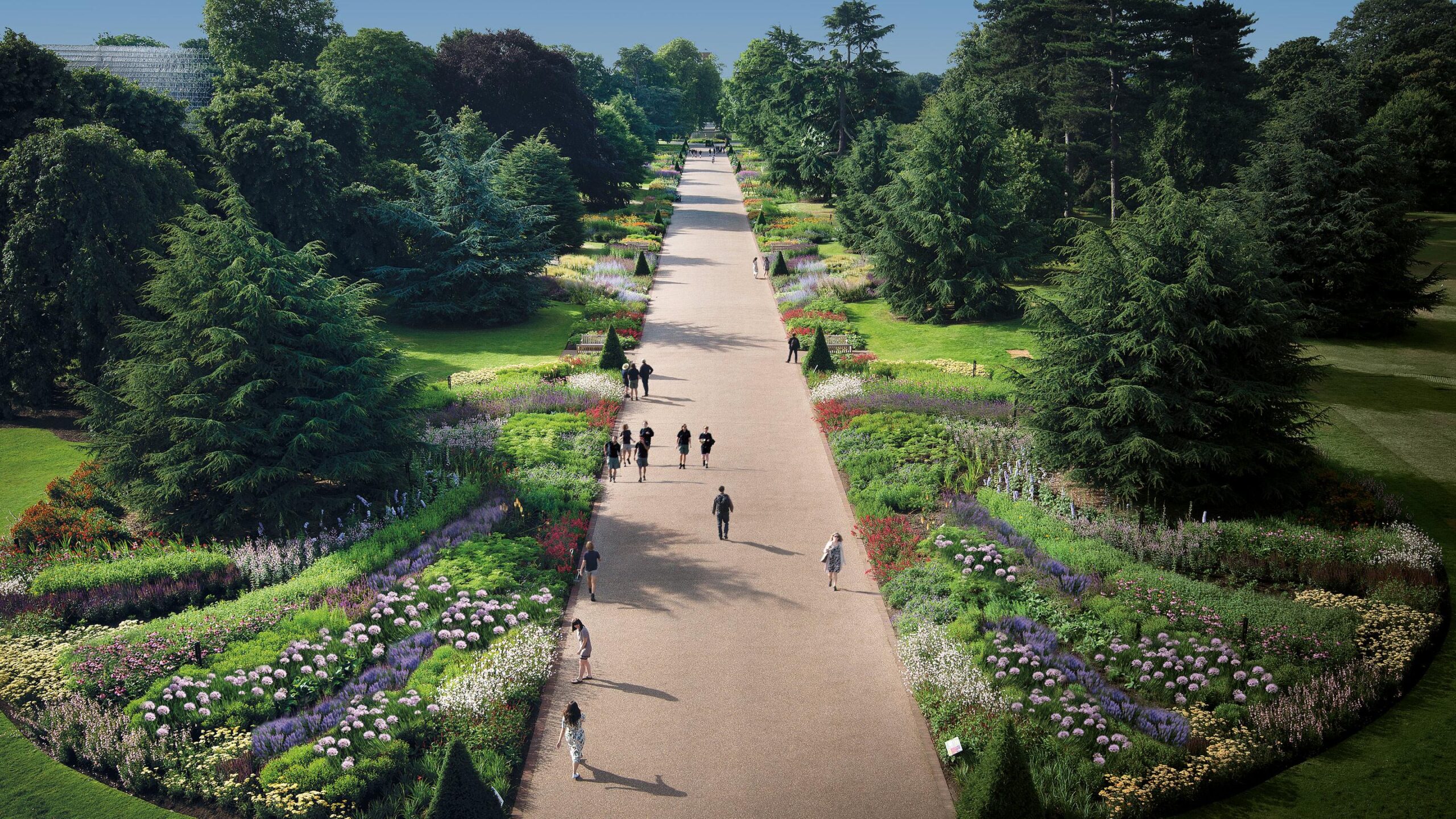It is just breathtaking to stand at the beginning of a wide path and look as far as the eye can see, and beyond, at 320 metres of herbaceous border – a Great Broad Walk indeed. It was a bold move from Kew to resurrect a garden form that many say has had it’s day, and on such a grand scale. But its success is not only in scale, it’s also superbly well done.
What makes it work so well? It seems to me it’s following the classic rules and implementing them really well – rhythm of form and colour, punctuation, unfolding seasonal interest, combined with huge horticultural skill so that every plant grouping, almost every flower, is the best it can be.
The overall form of the border is a series of curves, said on the Kew’s web page about the borders to resemble a giant bean pod, so that the border ebbs and flows symetrically on either side of the path. The narrow part of each section, where the curve meets the path, is punctuated by clipped yew pyramids, and rather beautiful facing pairs of wooden seats. The backs of the borders, the broadest part of each curve, incorporate the existing conifers, and as well as adding a fabulous dark green backdrop of foliage for the show of plants, they support the flow of the border along its huge stretch. For most of the walk the background trees enclose the border, but every now and then a vista or view other than the axis of the path unfolds, most dramatically of The Hive, Kew’s current sculpture and music installation about the lives of bees.

The plants for each section of the border have been chosen on thematic grounds that reflect the breadth of scientific and horticultural research at Kew. Some sections use a single plant family or type – for example, the daisy family, Compositae, with fabulous selections of Heliopsis and Heleniums, or Monocots, the large grouping of single leafed plants including many grasses and bulbs- whilst others reflect a particular use or characteristic – pollinators or shade plants for example. This approach could have created some rather dry and uninteresting areas (think of the ‘family beds’ of many botanic gardens, which are horticulturally useful, but aesthetically dull), but the plants for each theme have been chosen with skillful attention to colour and form, creating beautiful patterns and contrasts, and showcasing interesting varieties.


Helenium ‘Loysder Wieck’ from the daisy – Compositae– family themed border – an unusual cultivar with subtle colouring and distinctive spatulate petals -Wieck means ‘Windmill’ in Dutch (thank you Chris Marchant of the wonderful Orchard Dene Nurseries for your informative catalogue description!)
The plans for the border and each section have been beautifully realised and labelled with the species and cultivar names in a semi-photographic way, repeated on raised boards along the length of the border. It was easy to see that these were creating huge interest amongst the visitors wanting to identify particular flowers to use in their own gardens.

I found stunning examples of cultivars I didn’t know, and also wonderful new combinations of colour and form – I loved the moody, bruised blues of the Agapanthus ‘Jack’s Blue’ and Verbena bonariensis below.

Fabulously moody combination of Agapanthus ‘Jack’s Blue’ and Verbena bonariensis
Do visit during August or September if you can – the borders should be superb until the end of September, with many grasses on the verge of flowering right now.
Kate Jury

